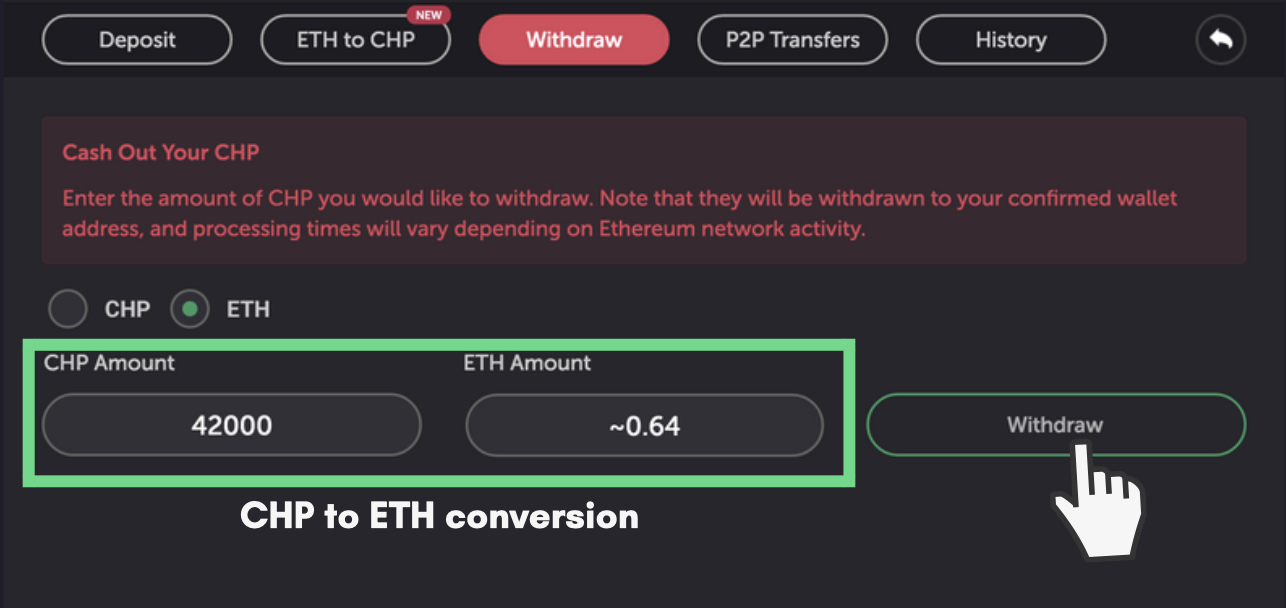The Ethereum (ETH) Merge is expected to take place on September 15 and usher in a new era for the blockchain, something that could improve the crypto poker ecosystem.

The Ethereum blockchain’s long-awaited shift from proof-of-work to proof-of-stake will take place this week and, among other things, reduce transaction fees.
Although the benefits of the ETH Merge will only be realized once the process is complete, some crypto experts believe it could revolutionize the blockchain. With lower fees and faster transactions promised, ETH 2.0 should provide crypto poker players with a better overall experience.
CoinPoker set to benefit from ETH Merge
CoinPoker, one of the largest cryptocurrency gaming sites, notified its customers of the Merge this week. An email explained that the event won’t have “any impact” on player balances or rewards.
However, as the Ethereum blockchain switches to a new way of working, CoinPoker will suspend its ETH-based cashier. That means players won’t be able to deposit or withdraw Ethereum tokens until the Merge is complete and CoinPoker’s software has been upgraded.
It should be business as usual from a player’s perspective once the ETH Merge is complete. Specifically, making deposits and withdrawals to crypto gaming sites like CoinPoker will be the same as it was before. Underneath the hood, the way transactions are processed will be different.
The main reason for changing the way Ethereum operates is to make transactions more efficient. The blockchain has used the proof-of-work system to validate transactions since it launched in 2015. As the number of users has grown, the length of time it takes to process transactions has increased.
Slower transaction times have also resulted in higher fees (known as gas). These changes have made Ethereum less efficient and in need of an upgrade. That upgrade is taking place this week and will see transactions verified by the less resource-intensive proof-of-stake system.
What are Proof-of-Work and Proof-of-Stake?
Blockchains such as Ethereum are decentralized networks. That means they don’t have a central authority validating transactions like a bank or PayPal do.
Instead, they rely on a consensus mechanism. Once members of the network agree (create a consensus) on the validity of a transaction, it gets processed. Establishing a consensus is done via proof-of-work or proof-of-stake.
Proof-of-Work
Proof-of-work is a verification system that involves powerful computers racing to solve a complex math problem. These computers are known as miners and the first one to solve the equation gets to update the blockchain with the last verified block of transactions. The block that gets verified by the miner is linked to the previous block.
It also becomes the block onto which a new one connects. The miner who completed the proof-of-work and verified the block of transactions receives a reward in the form of crypto tokens. Bitcoin uses the proof-of-work system.
Proof-of-Stake
The proof-of-stake system doesn’t use miners. Instead, it uses validators who stake some of their crypto tokens in exchange for the chance to validate a new transaction. The network randomly selects a validator to process the next block of transactions.
Validators with larger stakes in the network are more likely to be selected than those with smaller stakes. However, the process is random, which means no single validator acts as a central point of authority (control).
The validator processes the transaction and other validators confirm that it’s been processed correctly. This ensures everything is legit and each transaction is correct. The validator who processes the transaction creates the next block and gets rewarded for it.
Ethereum Merge to make poker transactions more efficient
The ETH Merge has been two years in the making. A separate blockchain (Beacon Chain) was created to test out the proof-of-stake system and verify its stability. Ethereum is now ready to merge with Beacon Chain and enter a new phase in its evolution.
Because proof-of-stake doesn’t require miners, it’s more energy-efficient. Estimates suggest it will reduce the blockchain’s energy use by 99%. This change will also make transactions faster which, in turn, will reduce gas fees.

All being well, crypto poker players won’t have to wait as long for their deposits and withdrawals to be verified. More significantly, a more efficient ecosystem could inspire traditional online poker sites to explore the uses of Ethereum and, potentially, integrate ETH payment options.
This might not happen in the immediate future, but it’s possible. Ethereum, and other blockchains are continually evolving and, the more efficient they become, the more poker operators and, in turn, players are likely to use cryptocurrencies.
So, while the ETH Merge may only impact crypto sites like CoinPoker right now, it could have a far greater impact on the industry over the next few years.


